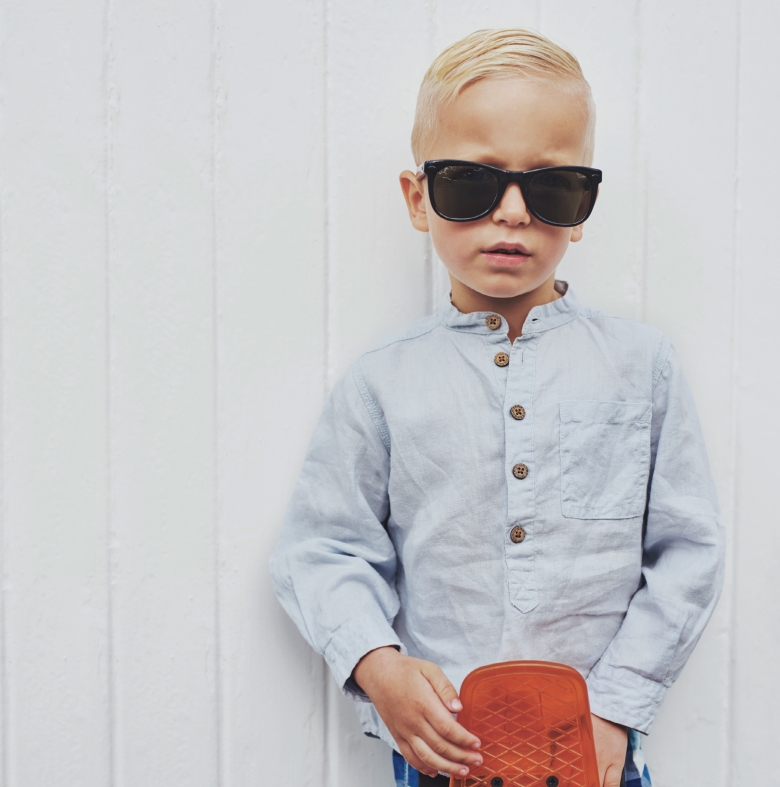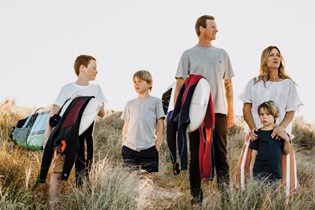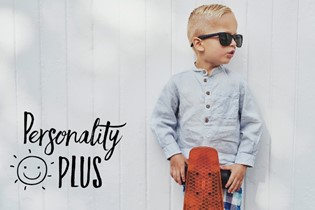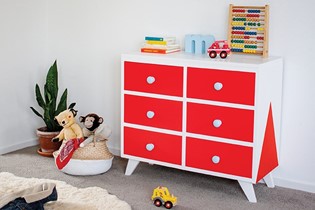Personality plus: temperament types
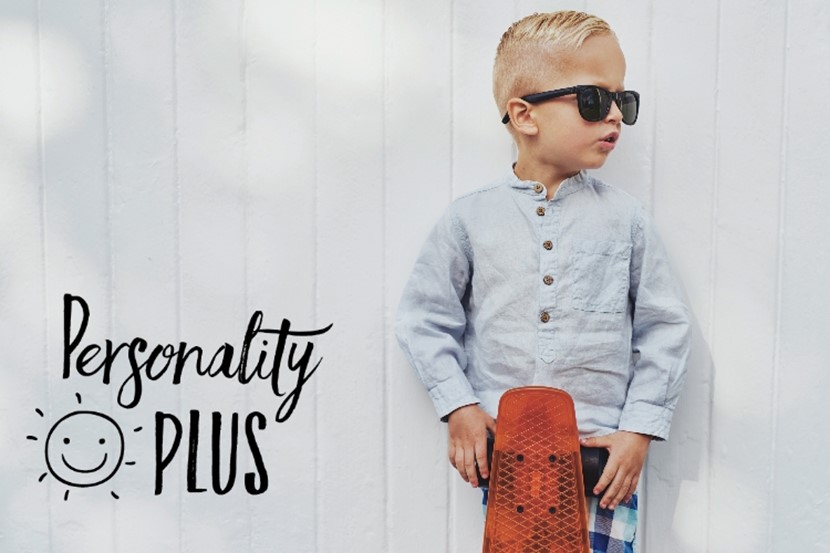
Dr Melanie Woodfield identifies the influences on temperament and helps parents respond to their children’s individual needs.
Pregnancy is a time of anticipation, of wondering what your baby’s little personality will be like as they grow and develop. Will they inherit that particularly long nose, or that impeccable hand-eye co-ordination? Will they be a bit shy and introverted like Mum? Or perhaps loud and outgoing (and slightly embarrassing) like Dad?
After your first child, you may have quietly congratulated yourself on doing an excellent job of parenting. Your firstborn developed into a calm, mature, intelligent and thoughtful preschooler. And then baby number two comes along. He’s fiery, hard to settle, a fussy feeder and seems to cry constantly. It quickly becomes very clear that each child is different. They have their own unique way of being in the world, and they respond differently to the same experiences.
Personality is a word we often use, but it’s actually a very complex concept when you break it down. As humans, we like to categorise and compartmentalise things, and this happens even with personality – the essence of who we are. We write books especially for parents of ‘the strong-willed child’, and even diagnose some adults as having a ‘personality disorder’ (yes, there is such a thing). This tendency is not bad or good, it’s just how we are. In reality though, things are more complicated.
Children’s personalities are constantly evolving, as they figure out their identity, where they belong, and who they are. There are memorable seasons where it’s normal for them to be ‘strong-willed’, ‘independent’ or ‘bossy’, and while these seasons can feel never-ending, they are important to a child’s development. Generally though, once established, personality is thought to be something that stays reasonably stable for most of our lives. Personality is not overly changeable, which is why personality tests can give us dimensions or categories that describe our usual reactions and responses to situations and experiences. Of course, seasons of depression, grief, anxiety or even good fortune can also influence personality. The more happy-go-lucky Pollyanna-types are bound to be a little bit glum for some time after experiencing a significant loss, while the glass-half-empty gal will likely be quite chipper for a few months following a Lotto win. Interestingly though, research into human happiness suggests that we tend to have a baseline level of happiness to which we return after big experiences like these.
TEMPERAMENT TYPES
You may have heard of, or even done, the Myers-Briggs personality test, and been rewarded with a four letter combination that sums you up! Completing one of these tests can feel really validating, as it helps you to better understand how to play to your strengths.
With children, however, we tend to talk of temperament rather than personality. And while we can’t sit a toddler down and run through the Myers-Briggs, the process is the same: figuring out strengths and weaknesses, patterns and propensities.
Research into children’s temperament is ongoing, but most researchers agree there are some central attributes, characteristics or domains that are important. In the 1950s, the New York-based husband and wife team Alexander Thomas and Stella Chess came up with nine main temperament characteristics or domains:
☙ Distractibility – this refers to the extent to which your child tends to be distracted or side-tracked while doing a task.
☙ Activity level – how active or sedentary your child is. Some children are always moving and on-the-go, others are naturally
more stationary.
☙ Intensity – the strength of response or reactions to even minor experiences or events. This might be positive (eg pleasure, delight) or negative (eg distress, sadness). Some children react with an intense emotion to everything!
☙ Regularity (or rhythmicity) – this is the predictability of basic functions like sleep, hunger or toileting patterns. Some children are inherently very rhythmic with their routines, while others can be all over
the place.
☙ Sensory threshold – how much input from stimulation (such as noise, touch, temperature changes) does the child need to produce a response? Some children are easily startled by small noises, and others barely notice.
☙ Approach/withdrawal (also known as initial reaction) – how does the child respond when meeting new people or when encountering a new situation or experience? Do they hesitate and hold back, or eagerly embrace the newness of the situation or person?
☙ Adaptability – how well does the child cope with changes in routines, and how do they transition from one activity to the next? How quickly do they adapt to
a new situation?
☙ Persistence – how long does the child tend to persist with an activity or task, even when faced with challenges or obstacles?
☙ Mood – a tendency toward a particularly happy or unhappy demeanour. All children have intense (and quite changeable!) emotions, but this refers to the child’s baseline – whether they tend to smile, or to fuss, or seem serious.
Now, it’s absolutely normal for all children to display some of these characteristics some of the time. For example, it’s normal for young children to be somewhat wary when meeting a stranger, or to be frightened by an unexpected loud noise. None of these attributes are all good, or all bad. And some will change with age – low ‘persistence’, for example, is common in infants but tends to improve as the child develops. However, if we think of these attributes as a pattern or a typical way that the child tends to respond, it can paint a picture that can help understand their needs.

PARENTING STYLES
“There is no such thing as a baby, there is a baby and someone.”
British paediatrician and psychoanalyst Donald Winnicott famously pointed out that babies don’t exist in isolation, but in relationship with someone else, usually a parent. This means that any talk of temperament must include talk of parents, and how we interact with and relate to our young child.
We all parent differently. Some of us are particularly warm and responsive, some are firm and in control, and some are a beautiful mix of both. Your parenting style is influenced by many different things, including the parenting you received, your personality, your values and beliefs, the stress you’re under, and your relationship with significant others. It’s also influenced by your child’s temperament – you may be invited to respond a particular way by certain behaviours in your child.
Of course, the other complicating factor is the layer of opinions and perspectives from others. We can feel that we should act in a certain way, or that our child should conform to certain ideals. There’s actually wide variation across cultures in terms of which temperament is most desirable. Some cultures value sociable, confident children, while others value quiet, shy children. There is no one ‘ultimate’ temperament, and there is no ‘ideal’ child that parents can create through sheer force of will!

The ultimate parenting style could be described as a good mix of being warm, and being in charge when necessary. The wonderful Circle of Security programme, which focusses on the early intervention models to increase attachment and security, has a lovely punchy way of describing the ultimate stance: be bigger, stronger, wiser and kind. Within that framework, try (as much as you can) to parent each child according to what it seems like they need. You’re likely to have a sense or intuition about which approach each of your children responds to best, and the road to success involves picking up on those cues, and fine-tuning your parenting to meet those needs, as much as you can.
Parenting can be a tiring task at the best of times, and when reading this, you may feel overwhelmed. You might be thinking ‘how can I parent each of my children differently?!’. The good news is that you just need to stick to the core strategies you’ve always used, but tweak them to acknowledge each child’s temperament. For example, be aware of how much sensory input each child is comfortable with, or how distractible or easily frustrated each child is. Sensitively picking up on what your child needs and responding to that is the key to success. And chances are you are already doing this – without necessarily thinking about it.
While temperament and parenting style are important, many other things will also have an effect on your child’s personality, such as their life experiences (the good and the bad), the influence of the other caregiver(s) and wider whanau, and the relationship between parent and child.
A GOOD FIT?
Sometimes people just naturally fit well together in a relationship, and sometimes they don’t. That’s why, in therapy situations, it’s crucial that the client and therapist relationship is a good fit. Sometimes it’s not, and there’s nothing ‘wrong’ with either party, it’s simply a poor fit. This is easy to rectify within the therapy setting because the client can find another therapist. However, it can be really hard when it feels like there’s a poor fit within the family relationships, particularly the parent-child relationship. Again, there’s nothing ‘wrong’ with either the parent or the child, it’s just a challenging and effortful relationship.
It may be about living as well as possible and accepting the differences between you and your child, as opposed to trying to change. It may be about playing to each of your strengths, and working with the weaknesses in each other and in the relationship. By understanding and tolerating your child’s unique strengths and needs, and accommodating them where appropriate, you can soften the hard edges in your relationship, and improve your fit. This will help reduce the stress in the relationship and invite a more harmonious connection.
THE WAY FORWARD
It may help to ask yourself a few questions:
★ Which aspects of your child do you find the most triggering?
By narrowing down these triggers, you may find it easier to keep things in perspective. Just remember, it’s not the whole child that you are reacting to, it’s something that they’re saying or that they’re doing, or it’s a way that they are responding.
★ Who does your child remind you of?
It’s possible there are similarities between you that make for more friction, or that your child reminds you of a key person in your family of origin.
★ Try to be as specific as possible.
Rather than ‘she’s infuriating’ or ‘he’s such a difficult child’, you could instead note that ‘she struggles with tolerating frustration, he finds it hard to share’, ‘she finds disappointment hard, he finds it hard to regulate and manage big feelings’ and ‘she can be very rigid and stubborn’, ‘he is very easily distracted’.
Many theorists suggest that a child’s personality isn’t fully formed until their early adulthood, so there’s still hope! That stubbornness, those constant melt-downs that you’re worried about now may well soften with age. Or they may remain, but actually become an asset – maybe your child will wear their heart on their sleeve, and be a compassionate and responsive person who people are drawn to. That bossy little four-year-old may become a strong leader. Or maybe the journey of parenting that particular child is an opportunity for you to develop certain insights and awareness that you wouldn’t have otherwise.
|
TRY TO REMEMBER ★ All children are stroppy some of the time. It’s a normal part of development. ★ There is no single, ultimate temperament in a child. Everyone’s different and that’s okay. ★ Nurture yourself. The journey can be hard when there’s a poor fit between your child’s temperament, your personality, your parenting style and the family system. Be kind to yourself, and remember that kids don’t need perfect parents, they need ‘good enough’ parents. |
|
Dr Melanie Woodfield is a child and adolescent clinical psychologist, and mother of two boys, who lives in Auckland. She would have been described as ‘strong willed’ as a child… |

AS FEATURED IN ISSUE 44 OF OHbaby! MAGAZINE. CHECK OUT OTHER ARTICLES IN THIS ISSUE BELOW



